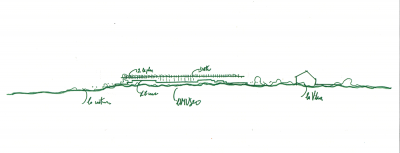Beyeler Foundation
The Beyeler Foundation consists of three parts: the Berower Park, acquired from the commune of Riehen in 1976; the 18th-century Berower Villa, which houses the restaurant and the administration; and the new museum. In 1991 Renzo Piano was approached by the Foundation and asked to develop an architectural project. Piano described the assignment as follows: A museum must attempt to reflect the quality of the collection and define its relationship with the outside world. This means it must play an active, but not aggressive, role. Two years later, the Foundation was granted building permission for the museum and construction began the following year. The long building covers the whole breadth of the narrow plot between a busy connecting road and a naturally protected area of agricultural land. It consists of two contrasting basic themes: long, solid walls and a light glass roof. All the external walls are clad with red Argentine Patagonian porphyry.
The building is based on four 120-metre-long, parallel load-bearing walls about 7 metres apart. The two end façades are glazed and afford a view of the garden. The building is supported by a blind wall facing the road that joins up with the section which accommodates the bookshop, cloakroom, toilets and so on. This wall is a kind of backbone or formative zone on which the architecture of the whole building is based. The opposite longitudinal wall houses a winter garden with an outside view, a place of relaxation for visitors to the museum. The exhibition rooms which accommodate the collection are based on a well-proportioned grid of approximately 7 by 11 metres, or slightly larger in some cases, and bounded by two of the longitudinal walls. The rooms, which are not organised in any strict linear order, are arranged so that visitors can easily find their way around.






.jpg)

